Situated in a plain surrounded by two mountain ranges offering a mild climate and magnificently impressive gardens to this city, Shiraz, is one of Iran’s oldest cities and the fourth biggest in the country. It was the capital of Persia during the rule of Zand dynasty and hosts few interesting historical sites.
The provincial capital of Fars, known as the cultural capital of Iran, is the heart of Iran’s history and a center of the rich Persian literary heritage. Shiraz has been a cradle of civilization and art for many centuries. some famous philosophers, thinkers and poets produced their masterpieces in this beautiful city. Shiraz is known as the city of flowers and nightingales, as well as the “City of roses and poets“, referring to its beautiful Persian gardens and two very famous poets; Sa’di and Hafez. There are quite a few beautiful mosques and other historical buildings showing the fantastic architecture, tile works and mirror works of Zand and Qajar era.
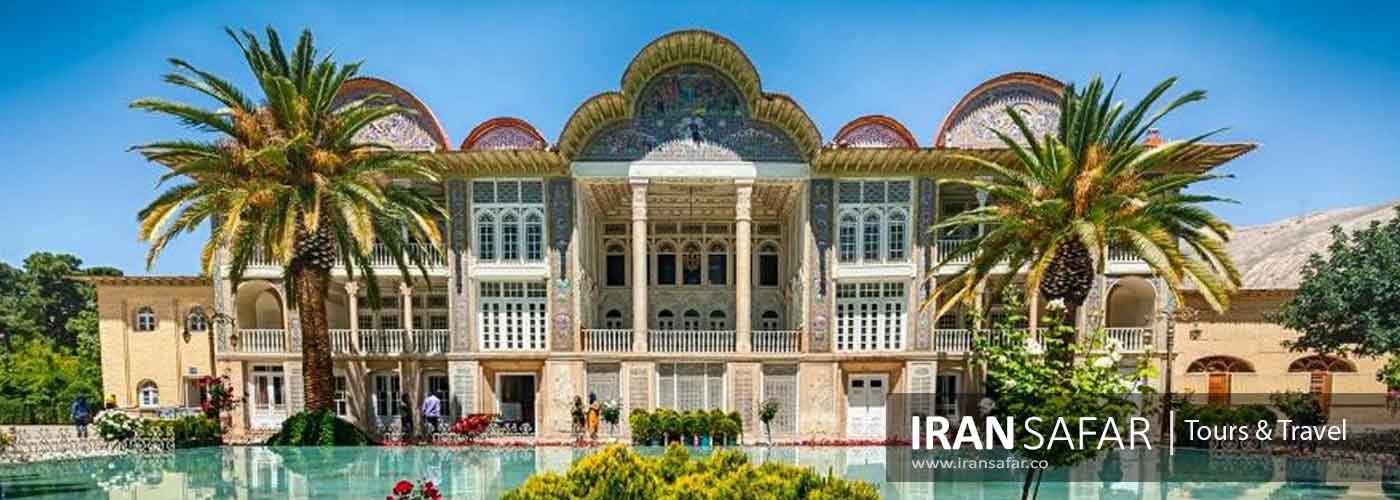
What to see in Shiraz?
Shiraz is the city of poetry and perfume. In addition to city’s beautiful Persian gardens and monuments, Persepolis, one of the world’s largest and most famous monuments is located nearby. This city with all its urban and historical features is a popular destination for domestic and foreign tourists specially In May, when Shiraz becomes an earthly paradise with its spring blossoms. In addition to all the attractions of this city, Shirazi people are also among the factors that make tourists interested in traveling to this place – nice, cheerful and hospitable.
Before visiting this city, read more about the sights of Shiraz and the attractions of the city.
1
Eram Garden of Shiraz
Although the exact date of its construction is unknown, many stories about Eram Garden of Shiraz have been written in travelogues of western travelers who passed by Shiraz in 17th and 18th Centuries. According to authentic historical documents, the garden was built during the Seljuk Era following the order of Sultan Sanjar, but this was not the end, and in later centuries, Shiraz rulers restored various parts of it.
In Qajar era (19th C) during the reign of Nasser al-Din Shah, the garden became part of the royal estate and was given to the rulers of Shiraz, therefore a new mansion was designed and founded by Hussein Ali Khan Nasir al-Molk.
Two unique features of the Eram Garden of Shiraz are the variety of vegetation and the architecture employed in construction of Mansion which follows a complex of different styles such as Achamenid pillar capitals, Zand architecture and Qajar external tile work decorations.
Also Read: Persian Gardens
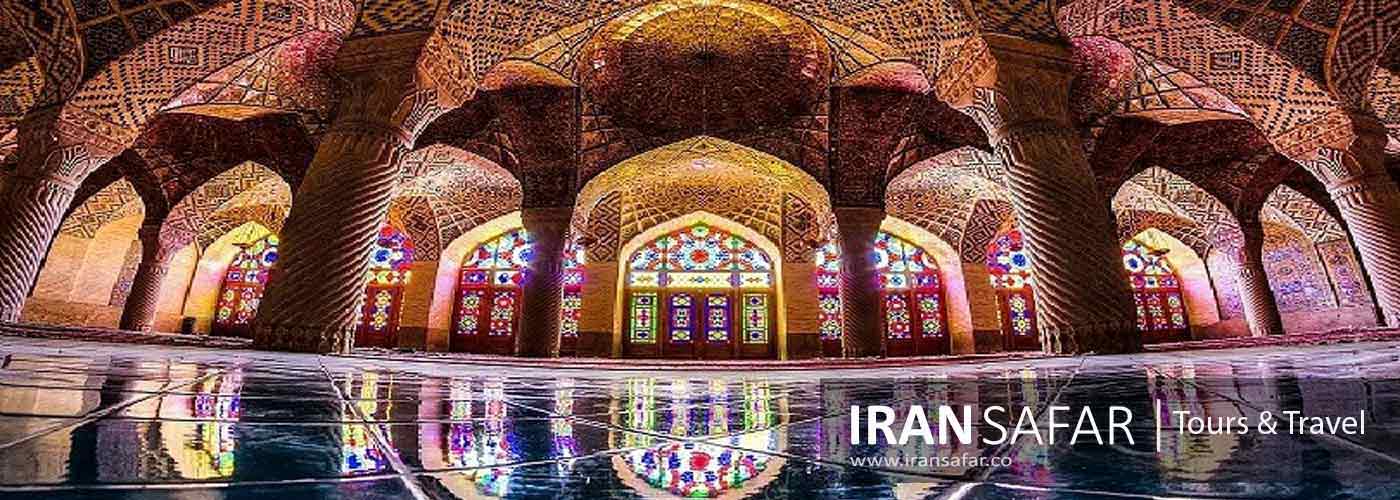 Nasir Al-Molk Pink mosque, Shiraz
Nasir Al-Molk Pink mosque, Shiraz
2
Nasir al Mulk Mosque
Nasir-Al Mulk Mosque is one of the most colorful mosques of Iran with an amazing tile work and architecture typical from the Qajar era and extensive colored glass work in its decoration. The mosque was built in 1888 by Nasir al Mulk a famous Qajar prince.
Nasir Al-Molk Mosque is one of the most beautiful mosques in Iran in terms of tiling and Muqarnas. The mosque has a large courtyard that is located on the north side. The entrance has a large arched façade decorated with colorful tiles. The mosque has two naves, east and west.
The use of stained glass in the interior design of Iranian architecture as well as in windows has been common. But using this unique beauty in construction of a mosque adds a lot to its beauty.
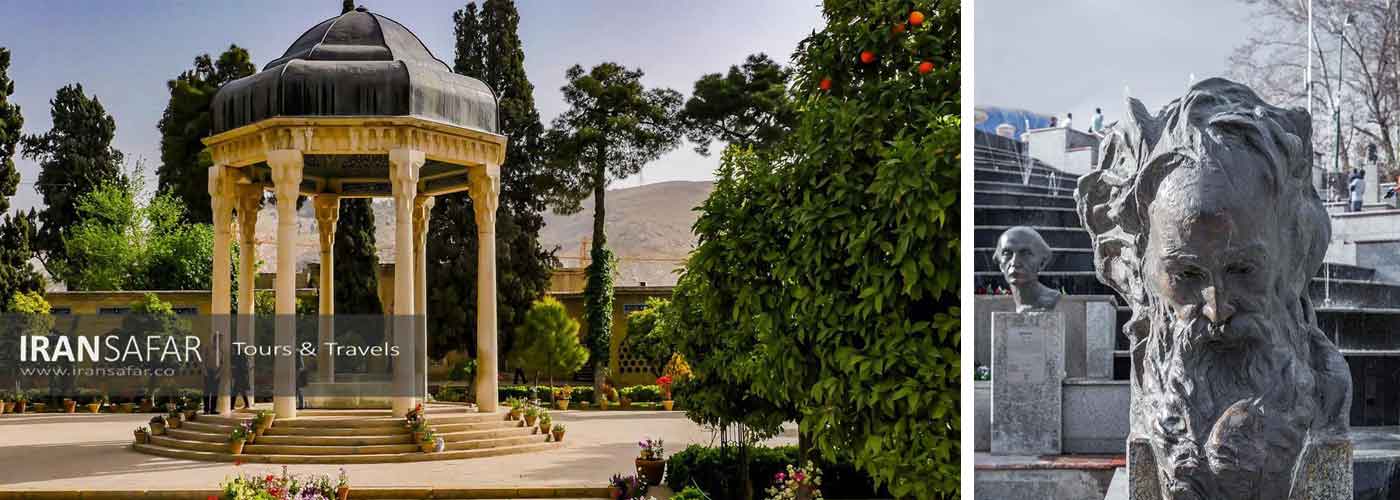 Tomb of Hafez, Shiraz
Tomb of Hafez, Shiraz
3
Tomb of Hafez Shirazi
The famous poet Hafez (14th century) is buried in Shiraz. The Tomb of Hafez or Hafezieh consisting of an open pavilion structure and a columned hall is situated in the Musalla Gardens on the north bank of a seasonal river and house the marble tomb of Hafez. The present buildings, built in 1935 and designed by the French architect and archaeologist André Godard, are at the site of previous structures built in 18th century. Hafez’s tomb in Shiraz, its gardens, and the surrounding memorials to other great figures, have become a popular pilgrimage site, where visitors come to pay homage and seek wisdom through the timeless verses of Hafez.
Also Read – Hafez and Sufism
4
Tomb of Sa’adi
The famous poet Saadi‘s (Sadi, Sa-di) Mausoleum. Marble tomb dates from 1860s, an octagonal shaped building, walls inscribed with Saadi’s poems in tile. Saadi, the poet and mystic of 13th century AD, is recognized not only for the quality of his writing, but also for the depth of his social thoughts. The following poem of Saadi is inscribed at the entrance to the Hall of Nations of the UN building in New York:
Thusly has Creation put the Base One Limb impacted is sufficient, For all Others to feel the Mace The Unconcerned with Others’ Plight Are but Brutes with Human Face.
5
Narenjestan Garden
Built between 1879-1886, Naranjestan Garden was the residence of governor of Fars province in Qajar period (19th century) . It significantly represents Iranian Architecture during Qajar era. Since 1998, the complex has been used by the faculty of Art and Architecture of Shiraz University.
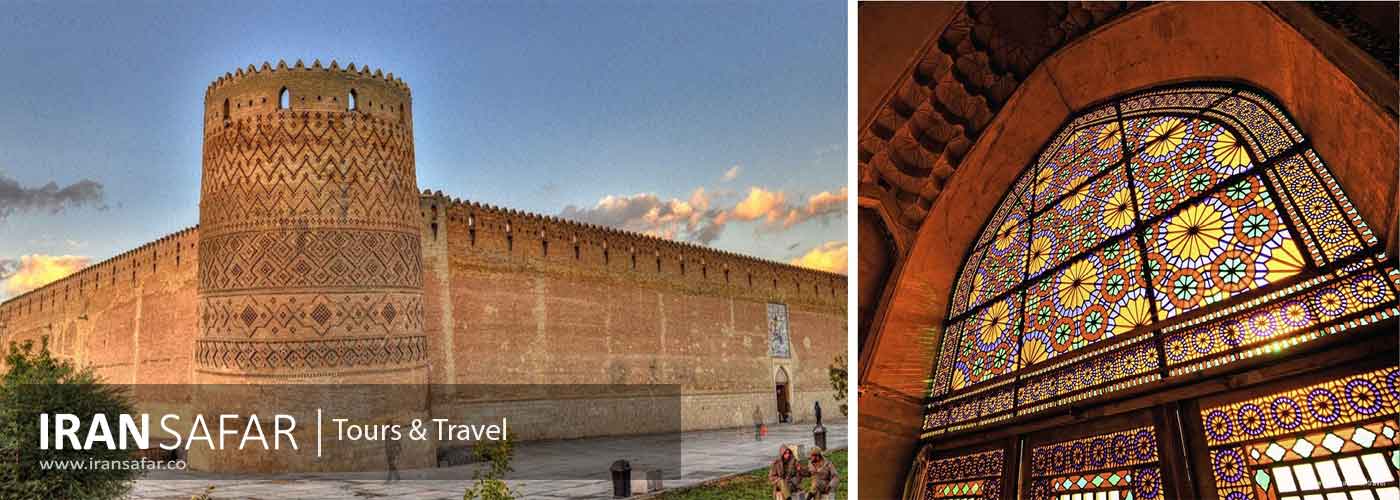 Karim Khan’s Citadel, Shiraz
Karim Khan’s Citadel, Shiraz
6
Karim Khan Citadel (Arg)
Karim Khan Citadel also known as Arg-e Karim Khani is a rectangular castle built in central Shiraz , in 18 th century , during the reign of Karim Khan Zand, who used it as his main residence. It has four circular watch towers at its corners. Inside the Arg, there are different buildings, the north building was used in winter, the south building for summer use, and west building was four all seasons. Outside of the building has simple presentation but on the contrary, inside the rooms used to have beautiful decorations , mostly gone after an arson happened in 20th century.
Read – Karim Khan Citadel
7
Vakil Bazaar and Vakil Mosque
It is a traditional bazaar built by Karim Khan (Vakil) in 18th century. Vakil Bazaar of Shiraz comprises arched alcoves with wide platforms in between, and seventy-four high and well-proportioned arches sustaining the roof, and there is a high domed crossing, where the east and west bazaars diverge from the main bazaar. Vakil Bazaar is ranked among the most colorful bazaars in the middle east.
Read – Best Bazaars in Iran
8
Vakil Bath
From the reign of Karim Khan Zand, beautiful works and monuments have been left in Shiraz. One of these masterpieces is called Vakil Bath (Hammam-e Vakil), which has an area of 11,000 square meters, 8660 meters of infrastructure, 120 meters long and 80 meters wide. It was built by Karim Khan Zand in the Darb-e Shahzadeh neighborhood, now Taleghani Street. This Persian Hammam is in the form of a cube and its entrance is located on the north side. The north façade of the bath overlooked the play area, which was later demolished and replaced by a short street. Vakil Bath is very valuable in terms of architecture and aesthetics and has now been turned into a carpet museum by the Cultural Heritage Organization of Fars Province.
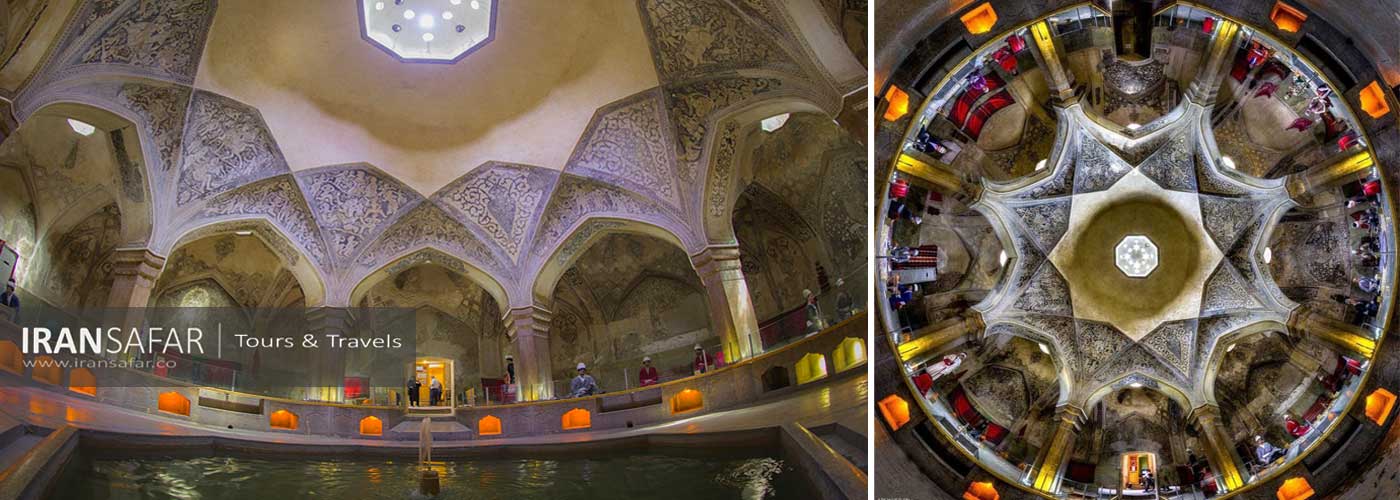 Vakil Bath, Shiraz, Iran
Vakil Bath, Shiraz, Iran
Also Read: Architectural Features in Ancient Persia
9
Afif Abad Garden & Weapon Museum
Afif Abad, a former palace built in 1863, which is currently housing the Weapon museum. Originally called Golshan Garden, it was constructed at the request of Mohammed Khan Qavamol-Molk about two hundred years ago. The current main building was constructed by Mirza Ali Mohammadkhan Ghawam II in 1863. After his death the garden was eventually inherited by a lady called Afifeh, thus being called Afif Abad.
10
Quran Gate of Shiraz
The Quran Gate of Shiraz, locally known as Darvazeh Ghor-an, is the ancient gated entrance to Shiraz from the north. Zand king, Karim Khan added a room at the top of the gateway to house a holy Quran so travelers leaving the city, passed under the Quran to be blessed for a safe trip! The complex also includes tomb of Khaju-ye Kermani, teacher of Hafez and a court poet contemporary to Sa-di. The view of Shiraz is breathtaking from this spot!
Also Read: Quran Gate, the symbol of Shiraz
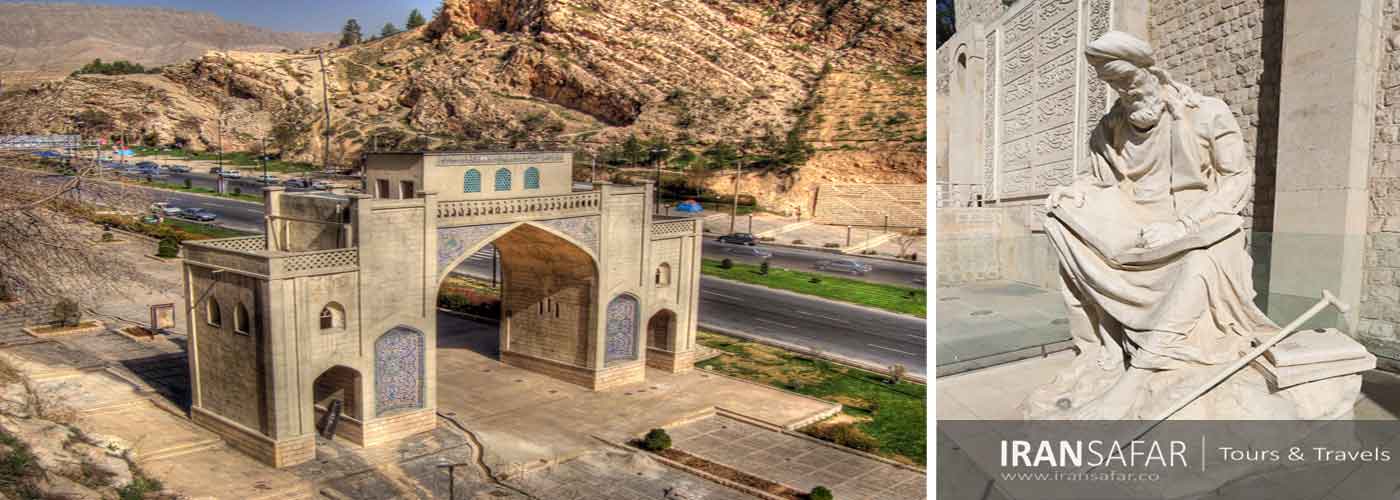 Quran Gate, Shiraz, Iran
Quran Gate, Shiraz, Iran
11
Persepolis
Persepolis, also known as Parseh, is a mirror of the ancient history and culture of Iran, which was commissioned by Darius the Great in 518 BC. with an area of about 125,000 square meters, as one of the architectural masterpieces of the world, Persepolis is in fact the peak of elegance and creativity of Iranian art in using the culture of different nations such as Egyptians, Babylonians, Greeks, Medes and Armenians. Darius’s purpose in building this complex was to build a capital in his empire that was unparalleled, and for this purpose, he chose the vast plain of Marvdasht with its ancient historical background. In 330 BCE, during the reign of Darius III, Alexander the Great plundered the city and burned the palaces.
Also Read: the Persepolis Ultimate Guide
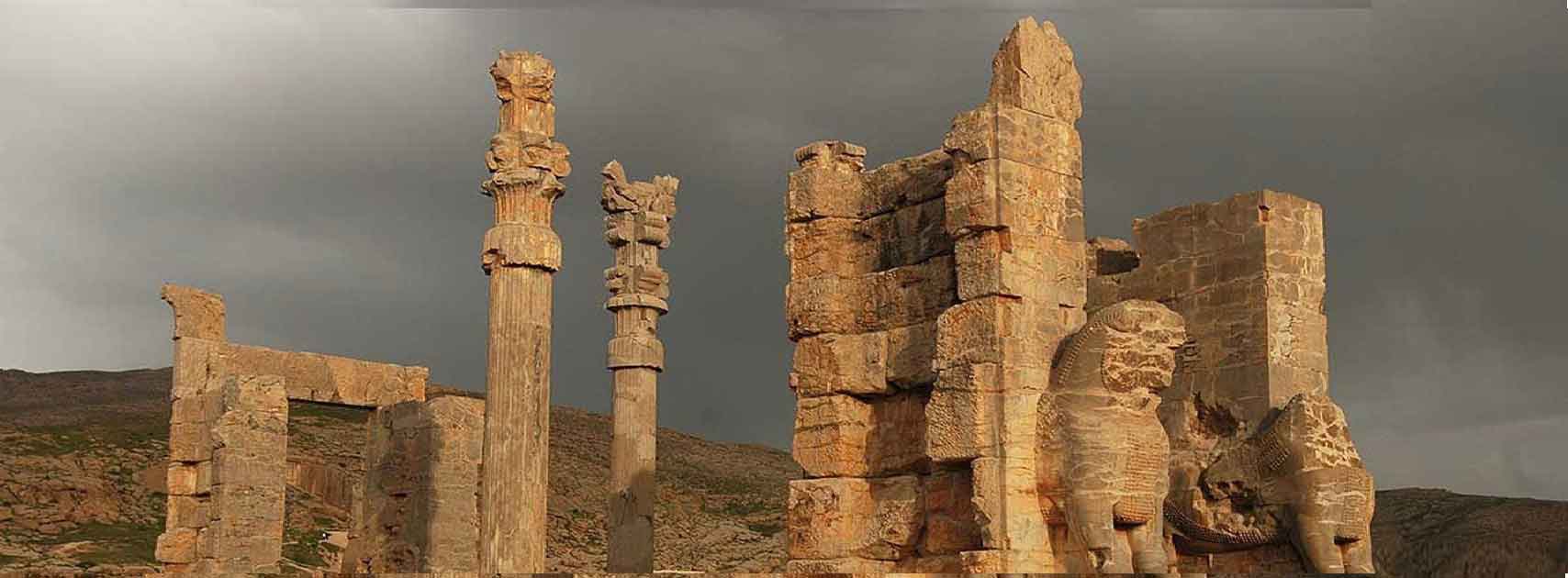 Persepolis Ruins, Marvdasht, Iran
Persepolis Ruins, Marvdasht, Iran
12
Naqsh-e Rosatm
Darius the great decided that the tombs of the Achamenid emperors had to lie a few miles from Persepolis, and he chose the cliff site of Naqsh-e Rostam (also Naqsh-i Rostam) where some old Elamite carvings already stood as the home of the large tombs hewn out of the vertical rock face. Instead of creating a mausoleum in the form of a house like that of Cyrus the Great at the nearby ancient site of Pasargadae, here the architectural formula was totally changed with the realization of colossal tombs cut directly out of the mountain face and visible from a great distance.
Read – Naqsh-e Rostam: Ultimate Guide
 Naqsh-e Rostam, Marvdasht, Iran
Naqsh-e Rostam, Marvdasht, Iran
13
Firuzabad Ancient City
Firuzabad, located in Fars Province, Iran, is an ancient city with a rich history dating back to the Achaemenid Empire. It is particularly famous for its association with the Sasanian Empire, having been founded by Ardashir I, the first Sassanian king, in the 3rd century AD. The city is known for its remarkable historical sites and ancient architecture. In addition, the region around Firuzabad also boasts beautiful natural scenery, with surrounding mountains and rivers, making it one of the best Iran’s natural attractions .
Read: Firuzabad Ancient City
Historical Sites in Firuzabad
Ghaleh Dokhtar: Meaning “The Maiden Castle” is a prominent historical fortress located near Firuzabad. Built by Ardashir I in 209 AD, it played a critical role in the early years of the Sasanian Empire and is one of the best-preserved examples of Sasanian military architecture. The Zagros Mountains, which stretch across western Iran, form a natural defense for the fortress. The fortress was later abandoned in favor of later Ardashir’s Palace.
The Palace of Ardashir: This grand structure was built by Ardashir I and showcases early Sassanian architecture. The palace is set against a stunning backdrop of natural landscapes, with its large domes and iwans (vaulted halls) that are a testament to the early engineering skills of the Sassanian architects.
The Fire Temple (Atashkadeh): Located near the palace, this fire temple had been one of the sacred Zoroastrian fire temples. It played a significant role in religious practices during the Sasanian period.
Victory Relief of Ardashir I: One of the most significant rock reliefs near Firuzabad, it depicts the victory of Ardashir I over the Parthian Empire, symbolizing the establishment of the Sasanian dynasty.
Also Read: Sassanid Archaeological Landscape of Fars
What to eat in Shiraz?
One of the main features of Shiraz is its local Persian cuisine and sweets. Shiraz offers numerous cultural attractions but the traditional dishes of this region also can be an option to fall in with Iranian traditions and customs. If you travel to Shiraz or other cities in Fars province, be sure to try the special dishes of this region. Shiraz has many different kinds of local dishes that you shouldn’t miss.
It’s hard to believe how much Shirazi people are professional in cocking different colorful POLOWs! Polow means Persian rice mixed with other ingredients such as herbs, meat or chicken. Here is a list of some of the best dishes of Shiraz:
Kalam Polow
The most famous dish of Shiraz is Kalam polow (cabbage pilaf), which of course is different from a dish with the same name cooked in other cities of Iran. Apart from cabbage, fragrant vegetables, meat and spices are used in the preparation of this food. Be sure to eat Shirazi Kalam Polow salad to enjoy its taste more.
Aush-e-Sabzi (vegetable soup)
Shiraz has many different kinds of Aush. Aush, ash, aash, or āsh, is a thick vegetable soup which is also found in Afghanistan, Azerbaijan, Caucasian, and Turkish cuisine. In Iran there are different types of Aush that are common in the whole country, but the Shirazi Aush-e-Sabzi is unique to Fars province and is a breakfast meal. You can find many food shops that sell Aush-e- Sabzi. It’s interesting to know that Shirazi people eat Ash for breakfast.
Koofteh Shirazi (Koofte hulu)
Koofteh or Kofta is a family of meatball dishes. Koofteh Shirazi locally known as Kofta Hulu is one of the traditional dishes of Shiraz and is prepared in such a way that the minced meat is grated with chickpea flour, eggs and onions and mixed with turmeric and salt and kneaded well. Then they chop two large onions, fry them and finally pour the raisins on it and fry a little. sometimes they add Pomegranate paste. This food is like a meatball containing all above-mentioned ingredients. Don’t forget to taste this delicious food during your trip to Shiraz!
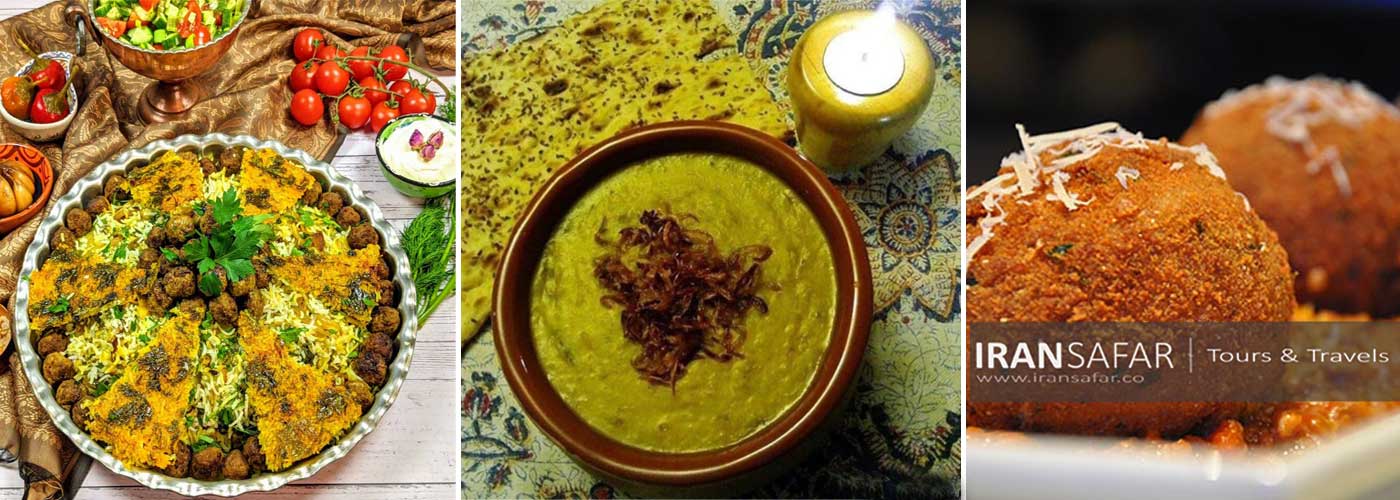 Left: Kalam Polow | Middle: Aush -e-Sabzi | Right: Koofteh Hulu | Shiraz, Iran
Left: Kalam Polow | Middle: Aush -e-Sabzi | Right: Koofteh Hulu | Shiraz, Iran
Faloodeh Shirazi
Something that shouldn’t be missed while you are in Shiraz, is Faloodeh (also spelled Paloodeh), an Iranian cold dessert originated in what is now the modern city of Shiraz (a different type also found in Kerman).
It’s completely different from western-style ice cream or other types of icy deserts, though it does have some features in common with sorbet. Sold in ice cream stores and coffee shops of Shiraz, Faloodeh is made of ingredients such as thin vermicelli-sized noodles made from starch in a semi-frozen syrup containing sugar, rose water, lime juice, or other fruit syrups; It’s an incredible frozen dessert unlike anything else you’ve ever tasted!

Where to stay in Shiraz ?
Shiraz is one of the most populous and largest cities in Iran and the capital of Iranian culture and civilization. This spectacular city with a temperate climate is located in the southeast of Iran and due to its many historical, cultural, religious and natural attractions, it attracts many travelers all year round. Shiraz is one of the busiest cities in terms of tourism, therefore there are many hotels, hostels, residences and other types of accommodation.
View: Shiraz Hotels
Shiraz Hotels
Shiraz has a total of 71 hotels, of which 6 are 5-star, 15 are 4-star, 22 are 3-star, 15 are 2-star and 13 are 1-star. There are also other types of accommodation rather than hotels; such as hostels, apartment hotels and residences. Here is a list of top hotel choices in Shiraz:
Shiraz FAQ: Essential Information
1. Where is Shiraz located?
Shiraz is the capital city of Fars Province in southwestern Iran, situated in a fertile valley at the foot of the Zagros Mountains.
2. What is Shiraz famous for?
Shiraz is renowned for its rich history, cultural heritage, and contributions to Persian literature and art. It is also famous for its gardens, poets (Hafez and Saadi), wine (historically), and architectural landmarks, like mosques and mausoleums.
3. What are the must-see attractions in Shiraz?
Persepolis, Nasir al-Mulk Mosque (Pink Mosque), Eram Garden, Hafez and Saadi Tombs, Shah Cheragh Shrine
4. When is the best time to visit Shiraz?
The ideal time to visit Shiraz is during spring (March to May) when the weather is mild, and the city is adorned with blooming flowers.
5. What is the significance of Shiraz in Persian poetry?
Shiraz is known as the City of Poets, as it is the birthplace and final resting place of two of Iran’s greatest poets, Hafez and Saadi. Their tombs are pilgrimage sites for lovers of Persian literature.
6. What is the local cuisine in Shiraz?
Shiraz is known for unique Persian dishes, such as Kalam Polo (Rice with cabbage, herbs, and meatballs)
7. Is Shiraz safe for tourists?
Yes, Shiraz is generally considered a safe city for tourists. However, as with any destination, it is important to stay aware of local customs and guidelines.
8. How can I get to Shiraz?
Shiraz is well-connected by:
Shiraz International Airport (SYZ): Offering domestic and international flights.
Trains and buses: Connecting Shiraz to major Iranian cities like Tehran, Isfahan, and Yazd.
9. What languages are spoken in Shiraz?
The primary language spoken in Shiraz is Persian (Farsi).


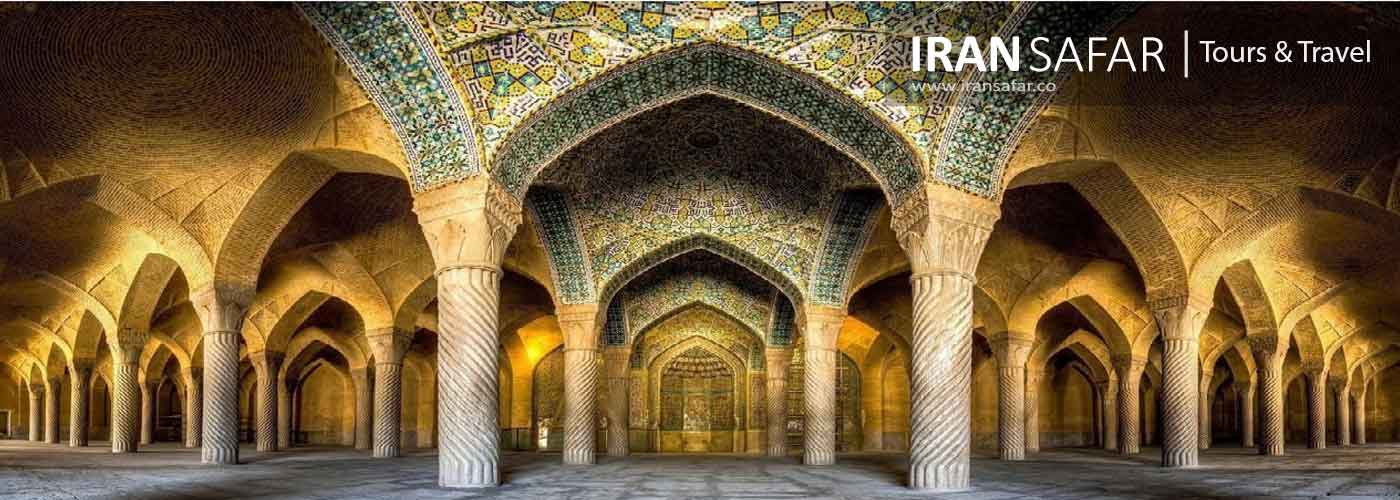

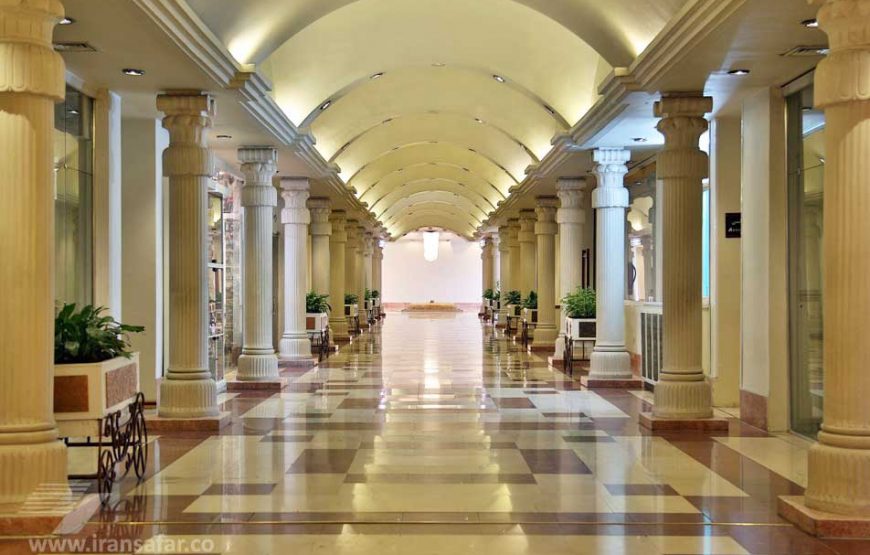
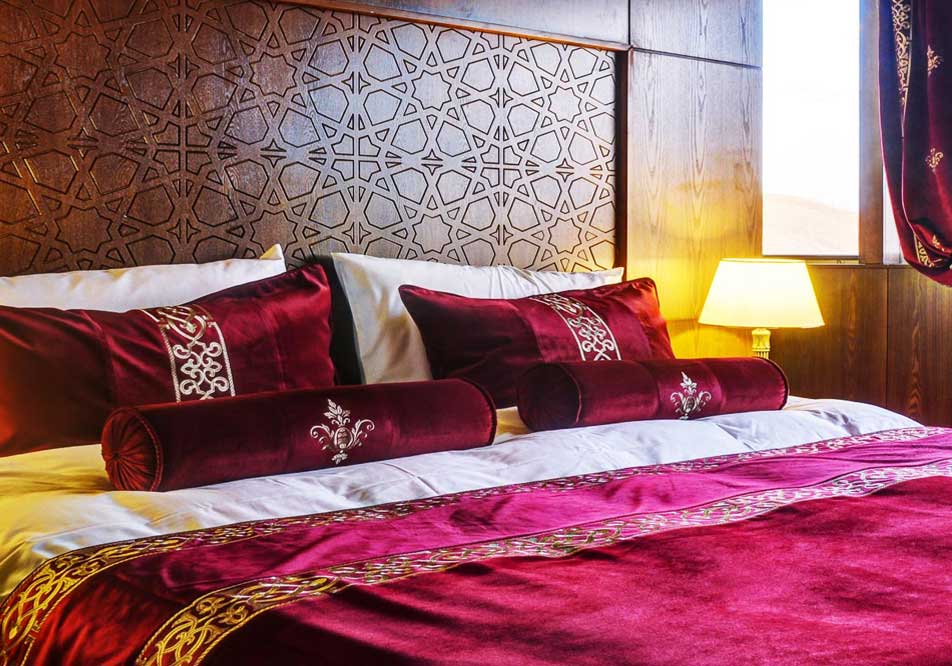
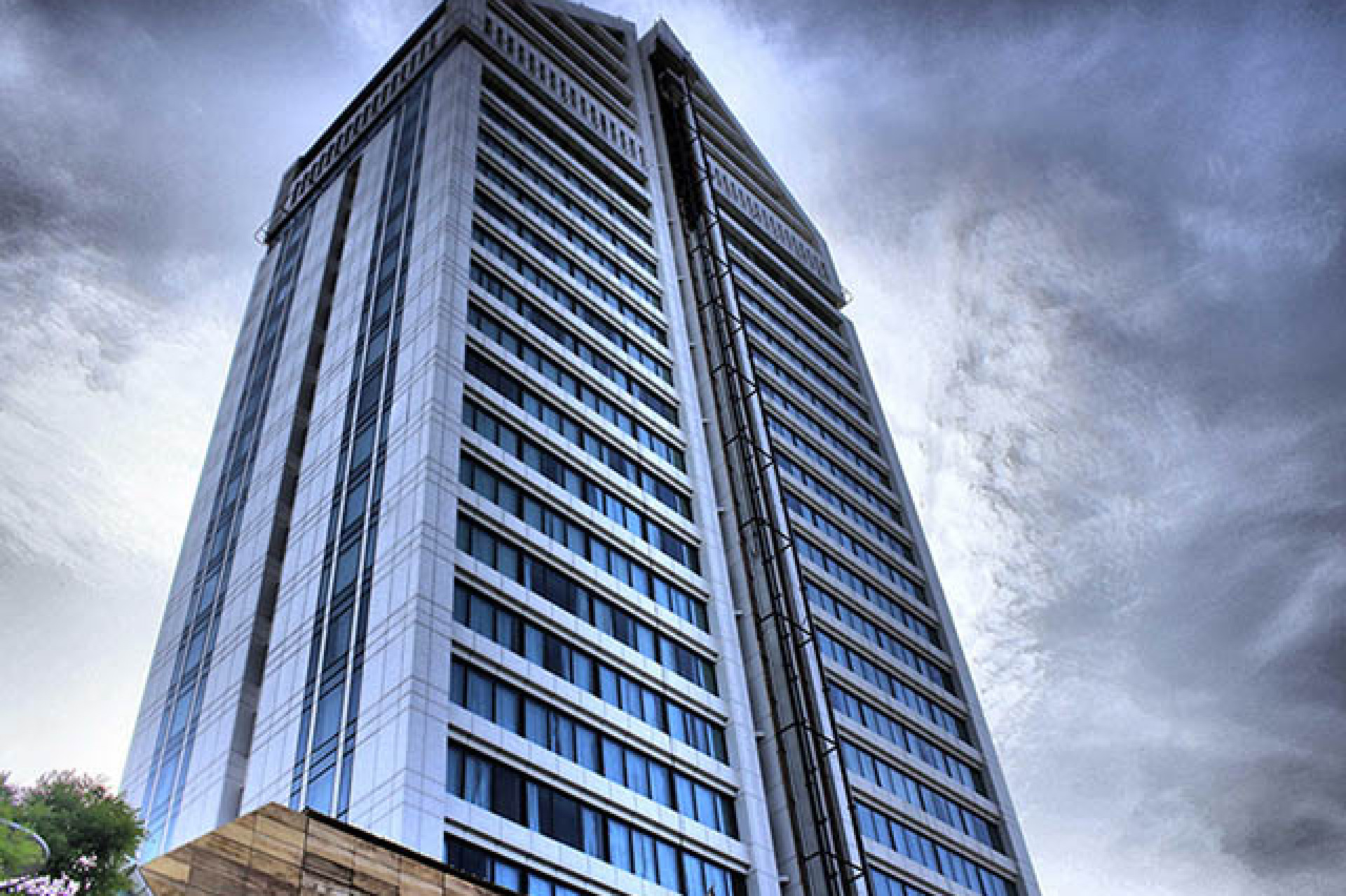
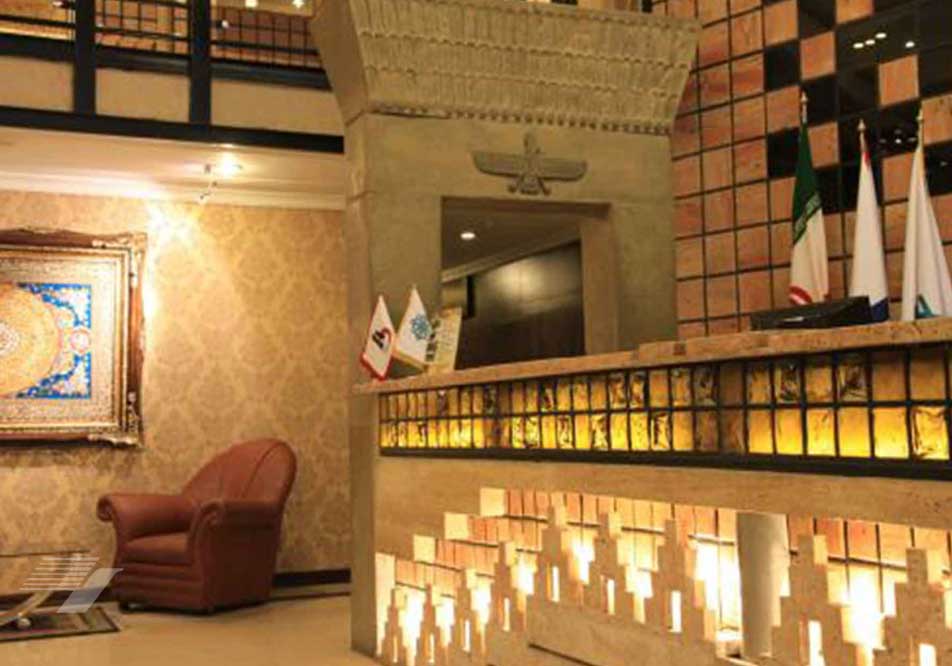
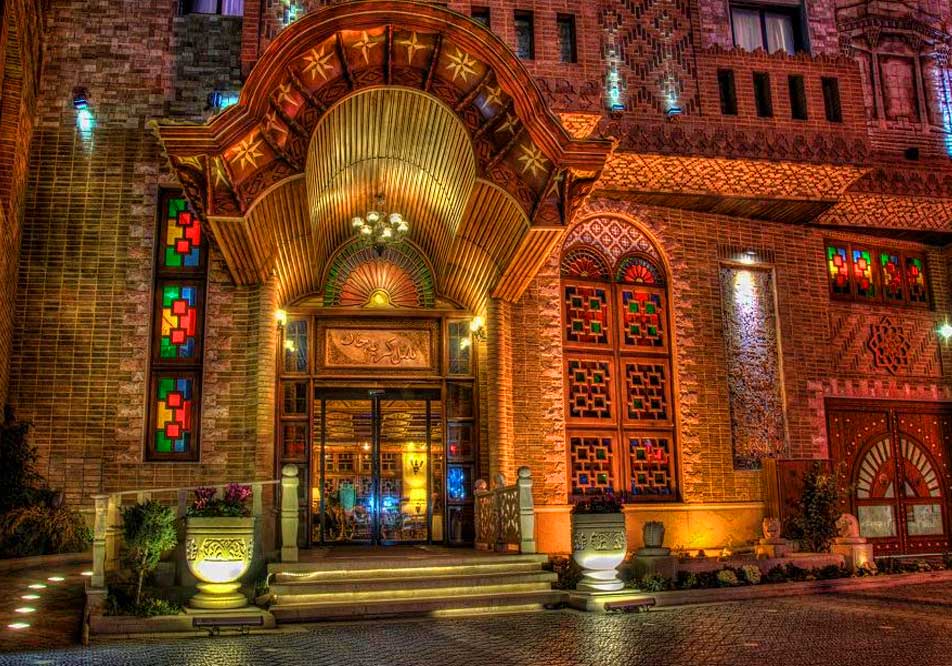
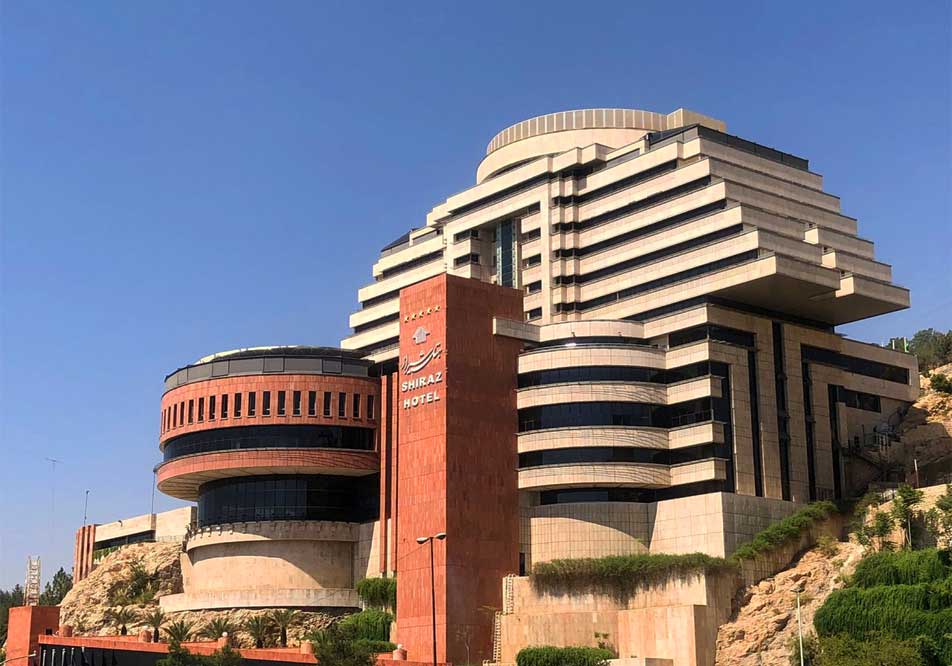

Wrote: Mona Jalili
Shiraz is a city that truly captures the heart of every traveler. Known as the City of Poets and Gardens, it offers a unique blend of rich history, breathtaking architecture, and warm hospitality. Walking through its fragrant gardens, visiting the stunning Nasir al-Mulk Mosque, and paying respects at the tomb of Hafez are experiences that stay with you long after you leave. Shiraz’s relaxed atmosphere makes it a must-visit destination for those wanting to immerse themselves in the beauty and soul of Iran.
Aş (Ash) means food in Turkish but in turkey we say yemek generally, but in Uzbekistan etc you can hear Ash, Sabzi is Sebze in Turkish wich means vegetable, Koofteh is Köfte : meatballs. Pelov is Pilav , Uzbek Pilav , Turkish Pilav is either from rice or wheat. Iran foods are generally Azeri Turkic kitchen. There is Tebriz Köfte too. Its normal too because half of iran is Azeri and old South Azerbaijan land.s